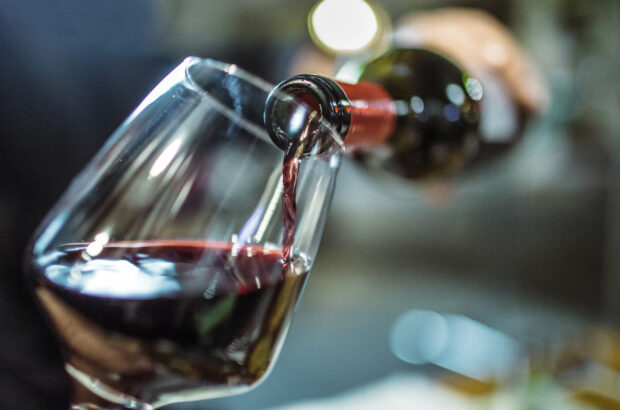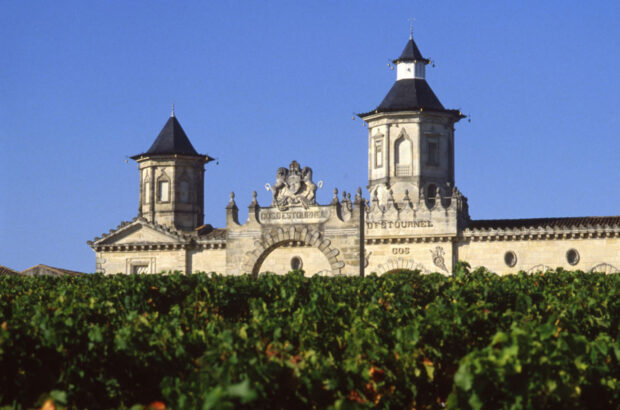Now in its 22nd year, Decanter World Wine Awards (DWWA) has returned to London with wines from 57 countries being assessed over five days at CentreEd, ExCel.
The 2025 competition brings together 254 judges from 35 countries, including a record 73 Masters of Wine and 22 Master Sommeliers — the highest number in DWWA history. Alongside classic regions, the competition has seen entries grow from emerging markets like Japan, Brazil and the USA, where producers are bringing new energy and focus to the table.

One out of the five judging rooms, with judges tasting in their regional panels. Credit: Nic Crilly-Hargrave
‘There is a whole lot of new wines to taste and the key thing is to look for excellence because producers as we know are being squeezed more than ever, so let us look for what is fabulous about the wines that are being presented this week.’ said Co-Chair Beth Willard, when welcoming the judges on the morning of the competition.
‘People respect this competition so much that they do us the privilege of sending in their wines for us to consider’ — added Co-Chair Sarah Jane Evans MW . ‘It is an extraordinary event – thank you to the Decanter team.’
What’s new in 2025
Judging at DWWA continues to evolve, with this year introducing improved protocols designed to raise the bar of precision and consistency.
Judges continue to be limited to tasting a maximum of 80 wines per day to avoid palate fatigue and to ensure every wine gets a fair assessment. Each entry, whether it receives a medal or not, comes with tasting notes for direct feedback on the wines.

A flight of red wines being poured. Credit: Nic Crilly-Hargrave
Andrew Jefford, Co-Chair, said: ‘We all have different palates, different olfactory chambers, different taste buds and it is that communal effort that really makes this competition so different. It is the wisdom of a crowd, you are now part of that crowd. Enjoy it and when you find a good wine, get behind it, that is the most important thing really.’
Reflecting changes in the global wine market, new price bands have also been introduced to help judges better contextualise quality and value. The revised brackets are:
- Price Band A – up to £14.99 (Value)
- Price Band B – £15 to £49.99
- Price Band C – £50 and above
‘We have the new price bands — £15 to £50 is more or less the mid-range. Is it a Value wine, is it a mid-range wine, or is it a higher-priced wine?’ — noted Evans MW when briefing her panel.

Regional Chair for Argentina, Paz Levinson retasting and signing off a Gold winner with Co-Chair Sarah Jane Evans MW. Credit: Nic Crilly-Hargrave
This year also introduces a new ‘Faults Masterclass’ for all judges. Designed to standardise understanding across a broad international panel, the session will be led by Sietze Wijma, a sensor scientist and educator from The Art of Tasting, which is focused on identifying and evaluating common technical wine faults, such as cork taint (TCA), oxidation, reduction, volatile acidity and brettanomyces. All extremely important when tasting wine blind.
Who’s new
‘This is the most diverse and experienced group we’ve ever assembled,’ — said Michael Hill Smith AM MW, DWWA Co-Chair — ‘You’ve got sort of the old and the bold… but more importantly, you’ve got an extraordinary group of young, really talented wine professionals.’

Co-Chair Michael Hill Smith AM MW, discussing with a panel. Credit: Nic Crilly-Hargrave
New DWWA judges this year include:
- Agnese Gintere, Latvia
- Benjamin Hasko MS MW, Singapore
- Camilla Bowler, UK
- Edward Ragg MW, China
- Helga Louise Schroeder MS, Germany
- Kamal Malik MS, Maldives
- Klearhos Kanellakis, UK
- Marcelo Pino, Chile
- Nimmi Malhotra, Singapore
- Nina Throsby, Australia
- Ray O’Connor MW, UK
- Rosana Lisa, Spain
- Sunny Hodge, UK
- Susan R Lin, US
- Tone Veseth Furuholmen, Norway
New Regional Chairs :
Sustainability
Sustainability has become an increasingly integral part of the DWWA’s operations, with DWWA staff haven taken extra steps this year to review and refine logistics. From reducing single-use materials to working closely with shipping partners on more efficient routing, the competition is increasingly conscious of its global footprint. ‘When you’re moving wines around the world at this scale, how you do it matters,’ said Simon Wright, Head of Logistics at Decanter.
This year, DWWA has significantly reduced its use of single-use plastics, including floor and table coverings, spit cups, plates and name badges. Over 1,000 cardboard boxes are being saved for reuse in 2026, instead of being immediately recycled. Leftover glass bottles are crushed on site to streamline recycling and all natural corks are collected and donated to be turned into mulch.

Over 67,000 bottles are being flighted and ready to be tasting. Credit: Nic Crilly-Hargrave
All leftover wine is poured into 1,000-litre IBC units and sent to an anaerobic digestion plant, where it’s converted into methane and added to the national grid. The 10+ units of wine processed produce around 3,000 kWh of electricity — enough to power an average UK household for over three months. Even the judging week’s food waste is repurposed: it’s fed to the UK’s largest wormery, located at ExCel.
DWWA also changed its competition rules two years ago to allow entries in all packaging formats — not just glass — to encourage producers using more sustainable materials.
Beyond the competition, Decanter is a founding sponsor of the Regenerative Viticulture Foundation and continues to support its work for the third consecutive year. We also partner with Belu to provide water at all events, supporting Belu’s sustainability goals and WaterAid initiatives worldwide.
Judging with depth and passion
DWWA 2025 showcases both time-honoured traditions and rising stars. Every panel brings its own expertise, and the level of discussion and evaluation is always intense.
As Ronan Sayburn MS Co-Chair explained: ‘I’m always looking for typicity in wines — they need to reflect the character of the region. Once they’ve reached that level, I then look for terroir, that true expression of the land. Some of the sparkling wines I’ve tasted this morning were of really high quality and so far, it looks like there’s a strong lineup of Gold medals.’

Ronan Sayburn MS re-tasting one of the wines for consistency. Credit: Nic Crilly-Hargrave
Dr Wojciech Bońkowski MW, newly appointed Joint Regional Chair for the Balkans, Central & Eastern Europe and Croatia & Slovenia, shared early impressions from his panel: ‘Red wines are catching up. We’ve seen progress in white winemaking over the past decade, but now reds like Kadarka, Kékfrankos and Bikavér from Hungary, or Bordeaux blends from Bulgaria and Cabernet Sauvignon from Czechia, are showing real finesse — less oak, less oxidation, fresher fruit, more contemporary. These are wines with growing appeal to younger audiences.’

Regional Chair Dr Wojciech Bońkowski MW, discussing the wines with senior judge Igor Sotric. Credit: Nic Crilly-Hargrave
Amanda Barnes MW, Regional Chair for Chile, commented: ‘Chile is incredibly exciting right now because of its amazing diversity. There are so many different styles emerging across the regions. For example, tasting Chardonnay from Casablanca versus Limarí highlights how distinct the regions can be. The consistency and quality of Chilean wines really stand out, with Chilean Malbec particularly catching my attention today. It’s always fun to explore the diversity and see how it evolves in each category.’
Looking ahead: Opportunity, innovation and celebration
The road to Best in Show: Bronze (86–89), Silver (90–94) and Gold (95–96) medals are awarded in the first round. Wines scoring 94+ are re-tasted for consistency and endorsement by Regional Chairs and Co-Chairs.
All Gold winners then face a second round to determine Platinum medals (97–100). From these, the top 50 are selected for the ultimate title: Best in Show. ‘It’s a celebration of the best the wine world has to offer’ – said Sarah Jane Evans MW.

Credit: Nic Crilly-Hargrave
This year’s competition also coincides with the 50th anniversary of Decanter Magazine—a milestone that underscores the DWWA’s role in shaping global wine awareness.
The results of DWWA 2025 will be published on Wednesday 18 June on Decanter.com. The updated DWWA Market Guide – producers’ ultimate route to the UK market – will launch alongside the results to help medal-winning producers connect.







